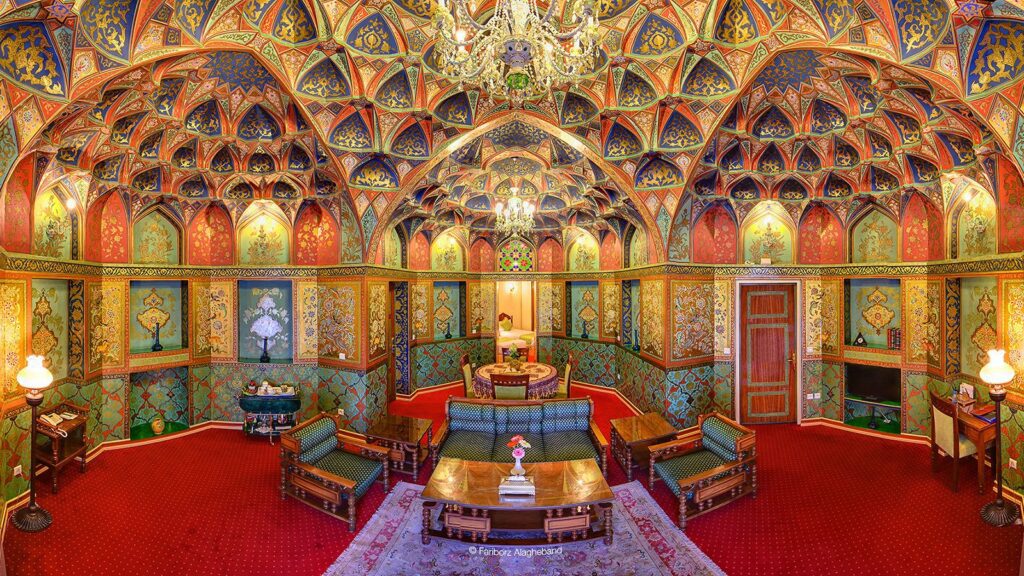Qazvin Anthropology Museum of Qajar Bathhouse
Unlocking the Mysteries of Human History

Qazvin, a city enriched with history, is home to the Qazvin Anthropology Museum, also known as the Qajar Bathhouse. This historical attraction stands as a testament to Iran’s architectural ingenuity, making it a must-visit for anyone exploring Qazvin for the first time. The museum, once a thriving bathhouse, showcases the splendor of Persian architecture that has captivated visitors from various perspectives.
Contents
History

Constructed in 1507 under the orders of the renowned Safavid king, Shah Abbas Safavi, by a member of the Qajar tribe before their ascendancy to power, Amir Guneh Khan Qajar, the bathhouse’s history spans nearly three centuries. Despite the passage of time, it remains steadfast and as beautiful as ever, preserving its ancient charm. Today, it is celebrated as one of the largest museums in Qazvin and was once considered among the grandest bathhouses in Iran.
A visit to this museum not only offers a glimpse into the architectural marvels of the past but also provides an intimate look into the lives of the people of Qazvin and the rich history of this ancient and significant city. Known in the past as the Royal Bath, the Qazvin Anthropology Museum promises an enriching experience, bringing visitors closer to the cultural essence of Qazvin.
Whether you are a history enthusiast, an architecture aficionado, or simply in search of an enriching cultural experience, the Qazvin Anthropology Museum awaits to transport you through time. Remember, exploring this museum is not just about witnessing the grandeur of a bygone era; it’s about connecting with the history and people of Qazvin in a way that leaves a lasting impression.
As you plan your trip to Qazvin, make sure to include the Qazvin Anthropology Museum in your itinerary. It’s not just a visit; it’s an opportunity to immerse yourself in the history and culture of this great city. Discover the architectural brilliance, understand the historical significance, and experience the cultural vibrancy that the museum has to offer.

Access Information
Hamam-e Qajar, located in Qazvin, stands as a significant testament to Iran’s rich cultural and architectural heritage. Dating back to the Qajar era, this historic bathhouse is renowned for its intricate decorations and architectural finesse, reflecting the period’s distinctive style.
Specifications and Access Information:
Location: Qazvin, Iran, near Sepah Street, which is one of the city’s main thoroughfares, making the bathhouse easily accessible to visitors.
Historical Significance: Hamam-e Qajar was a communal bathhouse serving the local population with various sections for different purposes, including hot and cold bathing areas, dressing rooms, and a central pool.
Architecture: The bathhouse features typical Qajar architectural elements such as elaborate tile work, beautiful plaster moldings, and domed ceilings that allow light to filter in softly.

Access Routes: Visitors can reach Hamam-e Qajar through the city’s well-connected roads. It is located in the heart of Qazvin, making it accessible by public transportation or private vehicles.
Nearby Attractions:
- Chehel Sotoun Palace: A short distance from Hamam-e Qajar, this palace is another splendid example of Qajar architecture, known for its impressive hall of mirrors and landscaped gardens.
- Qazvin Grand Bazaar: Offering a vibrant shopping experience, the bazaar is close to the bathhouse. Visitors can explore traditional crafts, spices, and fabrics, immersing themselves in the local culture.
- Alamut Castle: While a bit farther away, this historic fortress is a must-visit for those interested in the history of the Assassins (Nizari Ismailis) and offers breathtaking views of the surrounding landscapes.
- Sardar-e Bozorg Water Reservoir: Another example of Qajar-era infrastructure, this reservoir is notable for its architectural design and the role it played in the city’s water management system.
SURFIRAN Tours
Best Iran Tours
Hamam-e Qajar in Qazvin is more than just a historic site; it’s a gateway to understanding the social, cultural, and architectural advancements of the Qajar era. Its proximity to other attractions in Qazvin makes it a perfect starting point for exploring the city’s rich heritage.
Read More




